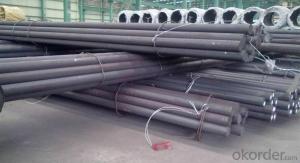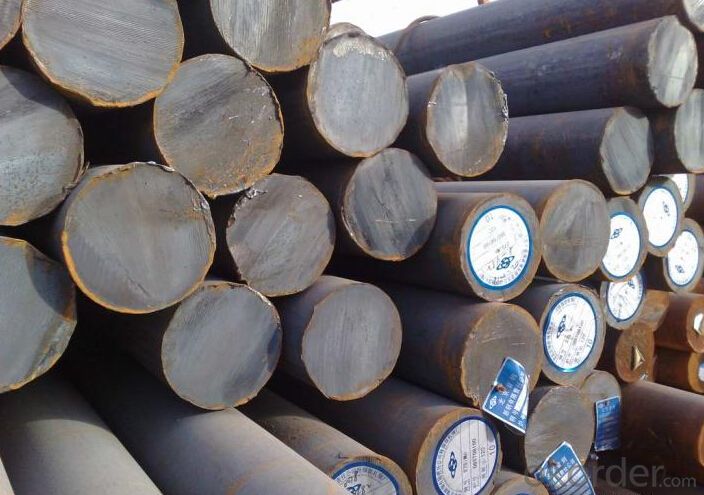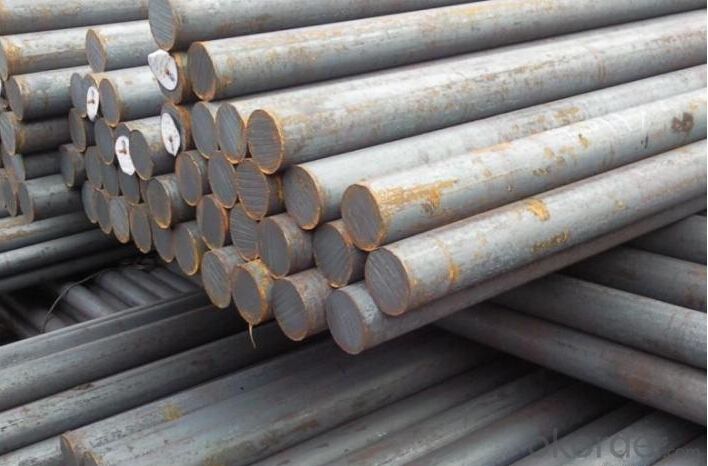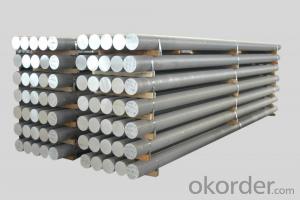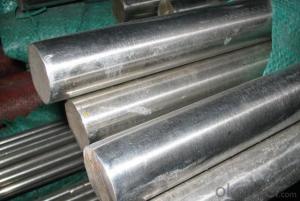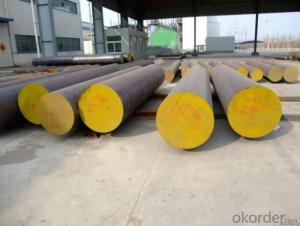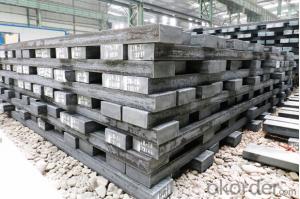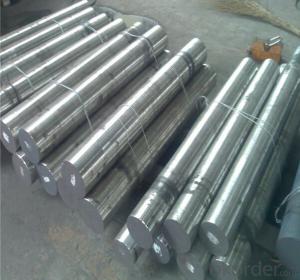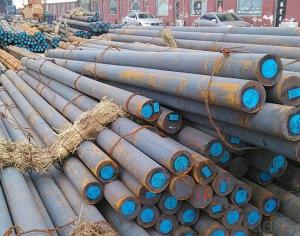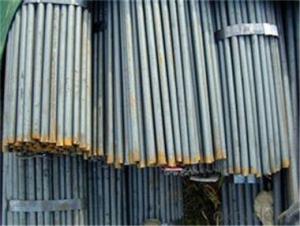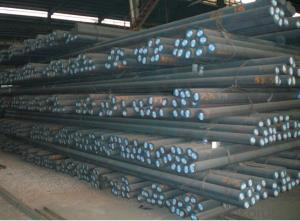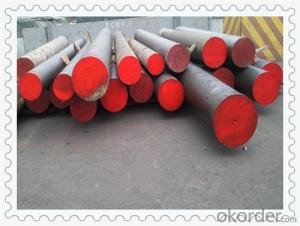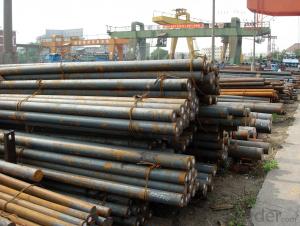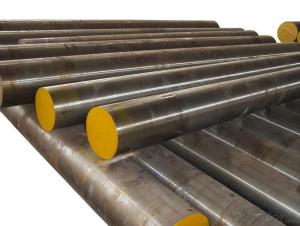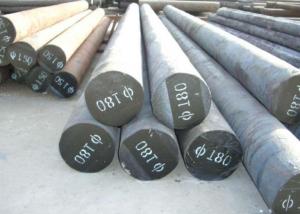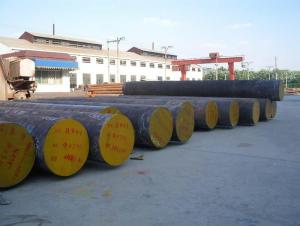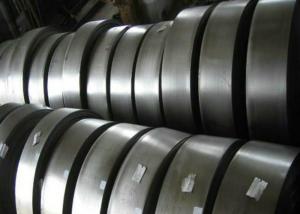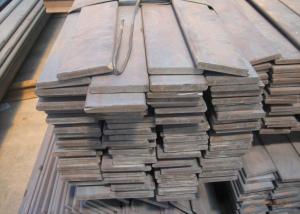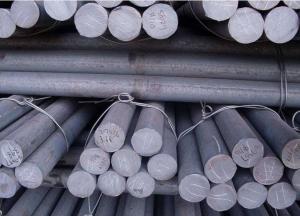Forged Grade c35 steel/1035 1045 1055 1065 Steel Round Material
- Loading Port:
- Shanghai
- Payment Terms:
- TT OR LC
- Min Order Qty:
- 3 m.t.
- Supply Capability:
- 100000 m.t./month
OKorder Service Pledge
OKorder Financial Service
You Might Also Like
Specification
Forged Grade c35 steel/1035 1045 1055 1065 Steel Round Material
Details Information of Forged Grade c35 steel/1035 1045 1055 1065 Steel Round Material
| Item | carbon steel bar C35,carbon steel rod,carbon steel shaft | |
| Model No. | Q235B,Q345B,A36,SS330,SS400,SAE1045,Q195,Q215,10#,15#, 25#,30#,1010,1015,1020,1025,1030 | |
| Standard | ASTM,AISI,JIS,DIN,GB,EN | |
| Size | round | Diameter:4mm-800mm |
| Length:1-12m,or as required | ||
| flat | Width:3mm-3000mm | |
| Thickness:0.3mm-200mm | ||
| Length:1m-12m,or as required | ||
| square | Diameter:2mm*2mm-800*800mm | |
| Length:1m-12m,or as required | ||
| angle | Width:10mm*10mm-400mm*400mm | |
| Length:1m-12m,or as required | ||
| hexagonal | Diameter:4mm-800mm | |
| Length:1m-12m, | ||
| Delivery time | Prompt or according to the order quantity. | |
| Trade terms | Payment terms:T/T,L/C,western union | |
| Price terms:FOB,CFR,CIF,EXW | ||
| Package | Standard export seaworthy package, or as required. | |
| Application | Steel bar applies to petroleum,chemical industry,electric power, boiler,high temperature resistant,low temperature resistant, corrosion resistant.Carbon steel bar also can be made accroding to the customer's requirement. | |
| Contact | If you have any question,please feel free to contact me. | |
Chemical Composition of Forged Grade c35 steel/1035 1045 1055 1065 Steel Round Material
| C | Si | Mn | P | S | Cr | Ni | Cu |
| 0.17-0.24 | 0.17-0.37 | 0.35-0.65 | ≤0.035 | ≤0.035 | ≤0.25 | ≤0.25 | ≤0.25 |
| Tensile strength (σb/MPa) | Yield strength (σb/MPa) | Elongation (δ5/%) |
| ≥410(42) | ≥245(25) | ≥25 |
Company Introduction of Forged Grade c35 steel/1035 1045 1055 1065 Steel Round Material
CNBM International Corporation is the most import and export platform of CNBM group(China National Building Material Group Corporation) ,which is a state-owned enterprise, ranked in 270th of Fortune Global 500 in 2015.
With its advantages, CNBM International are mainly concentrate on Cement, Glass, Iron and Steel, Ceramics industries and devotes herself for supplying high quality series of refractories as well as technical consultancies and logistics solution.
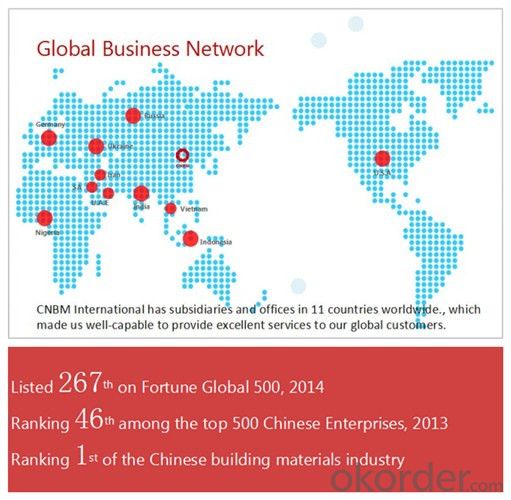
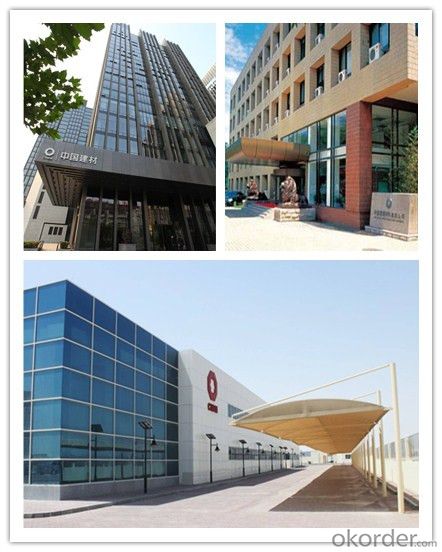
Certificates of Forged Grade c35 steel/1035 1045 1055 1065 Steel Round Material
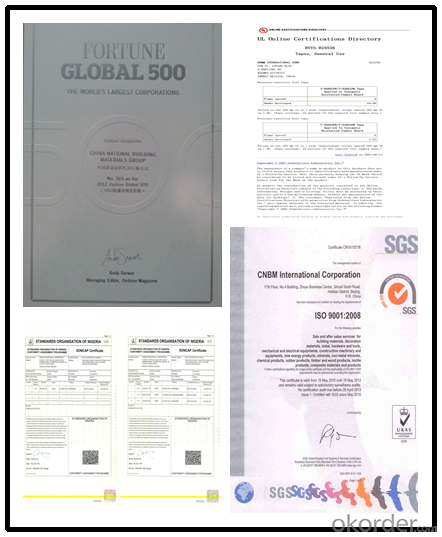
Packaging & Delivery of Forged Grade c35 steel/1035 1045 1055 1065 Steel Round Material
Packaging Detail | Sea worthy packing /as per customer's packing instruction |
Delivery Detail | 15 ~ 40 days after receiving the deposit |
Products show of Forged Grade c35 steel/1035 1045 1055 1065 Steel Round Material
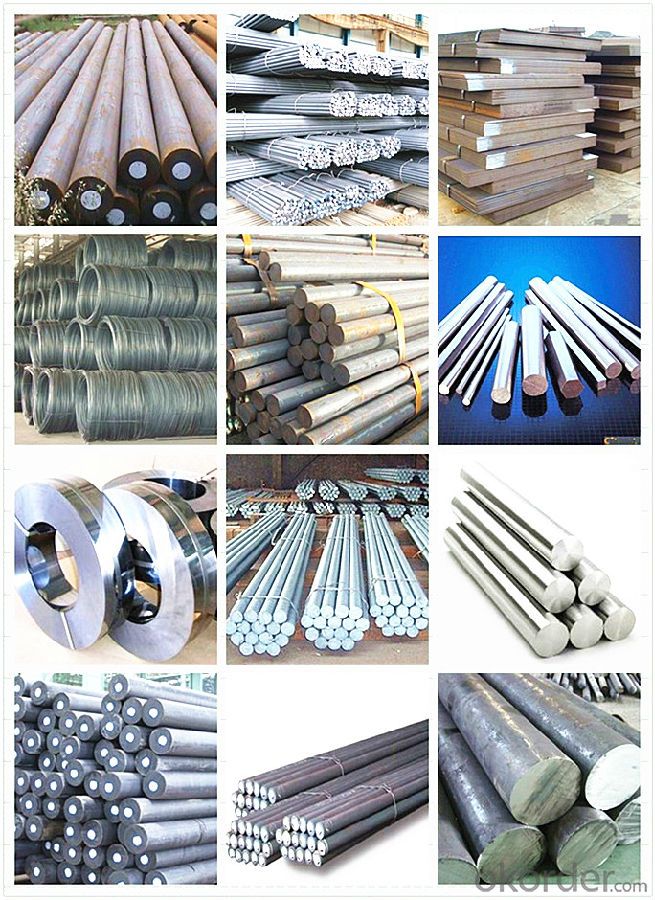
FAQ
Are you a trading company or manufacturer? | Manufacturer |
What’s the MOQ? | 3 metric ton |
What’s your delivery time? | 15-35 days after downpayment received |
Do you Accept OEM service? | Yes |
what’s your delivery terms? | FOB/CFR/CIF |
What's the Payment Terms? | 30% as deposit,70% before shipment by T/T |
Western Union acceptable for small amount. | |
L/C acceptable for large amount. | |
Scrow ,Paybal,Alipay are also ok | |
Why choose us? | Chose happens because of quality, then price, We can give you both. Additionally, we can also offer professional products inquiry, products knowledge train (for agents), smooth goods delivery, excellent customer solution proposals. |
What's your available port of Shipment? | Main Port, China |
What’s your featured services? | Our service formula: good quality+ good price+ good service=customer's trust
|
Where are your Market? | Covering more than 160 countries in the world |
- Q: What are the specific requirements for special steel used in the mining industry?
- Special steel used in the mining industry must possess high strength, durability, and resistance to extreme conditions such as abrasion, impact, and corrosion. It should have excellent toughness and hardness to withstand the harsh environments encountered in mining operations. Additionally, the steel should be able to maintain its mechanical properties even at elevated temperatures and be capable of withstanding heavy loads and intense vibrations.
- Q: How does special steel perform in cryogenic fatigue resistance?
- Special steel generally performs well in cryogenic fatigue resistance. The unique composition and heat treatment processes used in manufacturing special steel result in improved strength, toughness, and resistance to cracking at low temperatures. This makes it highly suitable for applications in cryogenic environments where materials are subjected to extreme cold temperatures and cyclic loading.
- Q: What are the common challenges in machining special steel?
- Machining special steel can present several common challenges that need to be effectively addressed in order to achieve desired results. One of the primary challenges in machining special steel is its high hardness and toughness. Special steels are often alloyed with various elements to enhance their properties, making them harder and more resistant to wear and corrosion. This hardness can cause increased tool wear and reduced tool life, requiring the use of specialized cutting tools and techniques. Another challenge in machining special steel is its low thermal conductivity. Special steels are known to have poor heat dissipation properties, leading to the accumulation of heat during the machining process. This heat buildup can cause thermal deformation, leading to dimensional inaccuracies and poor surface finish. Proper cooling and lubrication techniques, as well as appropriate cutting speeds and feeds, are crucial to overcome this challenge and prevent thermal damage. Additionally, special steels often have complex microstructures due to their alloying elements, which can result in uneven material removal and surface finish. These microstructural variations can make the machining process more unpredictable and challenging. Careful selection of cutting parameters, tooling, and machining strategies is necessary to ensure consistent and accurate results. Furthermore, some special steels may exhibit work hardening tendencies during machining. This means that as the material is being cut, it becomes harder and more resistant to further cutting. This work hardening can lead to increased cutting forces, tool wear, and poor surface finish. Utilizing appropriate cutting speeds, feeds, and tool geometries can help mitigate this challenge and prevent work hardening. Finally, special steels often come with higher manufacturing costs due to the complexity of their composition and the need for specialized tooling and equipment. The selection of suitable cutting tools, fixtures, and machining processes may require additional investment and expertise. Therefore, understanding the specific characteristics and challenges of machining special steel is crucial to ensure efficient and cost-effective production.
- Q: What are the safety benefits of using special steel?
- Several safety benefits can be obtained in various applications by using special steel. One of the key advantages lies in its superior strength and durability when compared to traditional steel. Special steel is often specifically designed to withstand extreme conditions, such as high temperatures or corrosive environments, making it highly suitable for industries like aerospace, automotive, and oil and gas. The enhanced strength of special steel allows for the construction of structures that are safer and more reliable. It can bear heavy loads, thus reducing the risk of structural failures or collapses. This is particularly crucial in industries where the utmost importance is placed on the safety of workers, equipment, and the general public. Resistance to corrosion is another safety benefit of special steel. Corrosion has the potential to weaken structures and compromise their safety. Special steel is frequently alloyed with elements like chromium, nickel, or molybdenum, which provide excellent resistance to corrosion. This makes it suitable for applications in marine environments, chemical processing plants, or any setting where exposure to moisture or chemicals is a concern. Special steel is also renowned for its ability to maintain its mechanical properties at high temperatures. This makes it an excellent choice for applications where resistance to heat is crucial, such as in the construction of fire-resistant structures or in the manufacturing of industrial ovens and furnaces. By utilizing special steel in these applications, the risk of structural failure or fire-related accidents can be significantly reduced. Furthermore, special steel can offer improved resistance to fatigue, which is of utmost importance in applications subject to cyclic loading or vibration. Fatigue failure can occur when a material experiences repeated stress over time, resulting in cracks and eventual failure. Special steel can be engineered to possess excellent fatigue properties, thereby reducing the likelihood of unexpected failures and enhancing the overall safety of structures or equipment. In conclusion, the safety benefits of using special steel encompass enhanced strength, durability, resistance to corrosion, resistance to heat, and resistance to fatigue. These properties establish special steel as a reliable choice for industries where safety is a primary concern, ensuring the protection of workers, equipment, and the general public.
- Q: How does special steel perform in dynamic loading conditions?
- Thanks to its high strength, toughness, and fatigue resistance, special steel excels in dynamic loading scenarios. When exposed to repeated and fluctuating stresses, special steel can endure the impact and maintain its mechanical properties without any setbacks or distortions. The distinct composition and processing techniques employed in the production of special steel, including the addition of alloying elements and heat treatment, significantly bolster its ability to withstand dynamic loading. Consequently, special steel proves to be an optimal material for applications that involve dynamic forces, such as automotive components, machinery parts, and structural elements utilized in construction. The exceptional performance of special steel under dynamic loading conditions guarantees durability, reliability, and safety across various industries.
- Q: How does special steel contribute to the aerospace material weight reduction?
- Special steel contributes to aerospace material weight reduction through its unique properties and characteristics. Special steel alloys such as stainless steel, titanium alloys, and high-strength low-alloy steel offer superior strength-to-weight ratios, allowing for the construction of lightweight yet robust components and structures in aircraft. These steel alloys possess excellent mechanical properties, including high tensile strength, hardness, and corrosion resistance, which enables them to withstand extreme conditions and reduce the need for additional material reinforcement. By utilizing special steel, aerospace manufacturers can design and fabricate lighter aircraft, resulting in improved fuel efficiency, increased payload capacity, and enhanced overall performance.
- Q: What are the advantages of using special steel in the marine sector?
- Special steel has several advantages when used in the marine sector. Firstly, special steel is highly resistant to corrosion, which is crucial in a marine environment where constant exposure to saltwater can cause regular steel to rust and deteriorate. This corrosion resistance extends the lifespan of structures and components, reducing maintenance costs and increasing safety. Secondly, special steel offers excellent strength and toughness, making it suitable for the demanding conditions of the marine sector. It can withstand high stress, impact, and vibration, ensuring the integrity of the structures even in rough seas or extreme weather conditions. Moreover, special steel can be fabricated into various shapes and sizes, allowing for customization and optimization of marine components. This versatility enables the production of lightweight yet robust structures, improving fuel efficiency, and reducing the overall weight of the vessel. Additionally, special steel can withstand low temperatures, making it suitable for marine applications in colder climates or polar regions. It retains its mechanical properties even in sub-zero temperatures, ensuring the safety and reliability of marine operations. In summary, the advantages of using special steel in the marine sector include corrosion resistance, high strength and toughness, versatility in fabrication, and low-temperature resistance. These qualities enhance the durability, safety, and efficiency of marine structures and components.
- Q: What are the different welding techniques for special steel?
- There are several different welding techniques that can be used for special steel, depending on the specific requirements and characteristics of the steel. Some of the commonly used welding techniques for special steel include: 1. Shielded Metal Arc Welding (SMAW): Also known as stick welding, SMAW uses a consumable electrode coated in flux to create an arc between the electrode and the base metal. This technique is versatile and can be used for a wide range of steel types, including special steel. 2. Gas Metal Arc Welding (GMAW): Also known as MIG (Metal Inert Gas) welding, GMAW uses a continuous solid wire electrode and a shielding gas to protect the weld from atmospheric contamination. This technique is commonly used for thinner special steel materials. 3. Flux-Cored Arc Welding (FCAW): Similar to GMAW, FCAW uses a continuous tubular electrode filled with flux. This flux provides additional shielding and can allow for higher deposition rates. FCAW is suitable for special steel with thick sections or when welding in outdoor or windy conditions. 4. Gas Tungsten Arc Welding (GTAW): Also known as TIG (Tungsten Inert Gas) welding, GTAW uses a non-consumable tungsten electrode and a shielding gas. This technique is known for its precision and is often used for special steel alloys that require high-quality and aesthetically pleasing welds. 5. Plasma Arc Welding (PAW): PAW is similar to GTAW but uses a more focused arc created by passing gas through a constricted nozzle. This technique is often used for special steel alloys that have higher melting temperatures or require deeper penetration. 6. Submerged Arc Welding (SAW): SAW involves feeding a continuous wire electrode into a molten flux layer that covers the weld. This technique is commonly used for heavy and thick special steel sections, as it provides excellent penetration and high deposition rates. It is important to choose the most appropriate welding technique for special steel based on factors such as the steel composition, thickness, intended application, and desired weld quality. Consulting with a qualified welding professional or referring to the steel manufacturer's recommendations can help ensure the best welding technique is selected for the specific special steel being used.
- Q: What are the different methods of improving the strength of special steel?
- There are several methods that can be employed to improve the strength of special steel. One common method is through the process of alloying. By adding certain elements to the steel, such as manganese, chromium, or vanadium, the strength and hardness of the steel can be significantly increased. These alloying elements form strong and stable compounds with the steel, enhancing its overall strength. Another method is through heat treatment. This involves subjecting the steel to controlled heating and cooling processes to alter its microstructure. For instance, quenching and tempering can be used to increase the strength and hardness of the steel by creating a hardened martensitic structure. Precipitation hardening is another heat treatment technique which involves the formation of fine particles within the steel matrix, resulting in improved strength. Cold working is also a widely used method for strengthening special steel. By subjecting the steel to plastic deformation at low temperatures, its grain structure becomes elongated and dislocations are introduced. This leads to an increase in strength and hardness of the steel. Additionally, surface treatments can be applied to improve the strength of special steel. For example, carburizing or nitriding can be used to introduce carbon or nitrogen into the surface layer of the steel, forming a hard and wear-resistant surface. Furthermore, advancements in metallurgical technology have introduced techniques such as powder metallurgy and rapid solidification. These methods involve the production of steel with fine and homogeneous microstructures, resulting in improved strength and performance. Overall, the methods of improving the strength of special steel include alloying, heat treatment, cold working, surface treatments, and advanced metallurgical technologies. These techniques can be tailored to meet specific requirements, enabling the production of high-strength and high-performance steel for various applications.
- Q: What are the different corrosion-resistant special steel alloys?
- There are several corrosion-resistant special steel alloys that are commonly used in various industries. Some of the most popular ones include stainless steel, duplex stainless steel, super duplex stainless steel, and nickel-based alloys. Stainless steel is a widely used corrosion-resistant alloy that contains a minimum of 10.5% chromium. It forms a protective layer of chromium oxide on its surface, preventing further corrosion. Stainless steel is highly resistant to rust, staining, and pitting, making it suitable for applications in the food processing, chemical, and marine industries. Duplex stainless steel is a combination of both austenitic and ferritic stainless steels. It offers excellent resistance to corrosion, particularly in environments with high chloride ion concentrations. Duplex stainless steel is commonly used in the oil and gas, chemical, and desalination industries. Super duplex stainless steel is a higher strength version of duplex stainless steel. It offers enhanced corrosion resistance and mechanical properties, making it ideal for applications in harsh environments such as offshore oil and gas platforms, chemical processing plants, and seawater desalination systems. Nickel-based alloys, such as Inconel and Hastelloy, are known for their exceptional resistance to corrosion and high-temperature environments. These alloys are commonly used in industries such as aerospace, chemical processing, and power generation, where resistance to both corrosion and heat is critical. These corrosion-resistant special steel alloys provide various options for industries that require materials with excellent durability and resistance to corrosive environments. The choice of alloy depends on the specific application, operating conditions, and desired performance characteristics.
Send your message to us
Forged Grade c35 steel/1035 1045 1055 1065 Steel Round Material
- Loading Port:
- Shanghai
- Payment Terms:
- TT OR LC
- Min Order Qty:
- 3 m.t.
- Supply Capability:
- 100000 m.t./month
OKorder Service Pledge
OKorder Financial Service
Similar products
Hot products
Hot Searches
Related keywords
